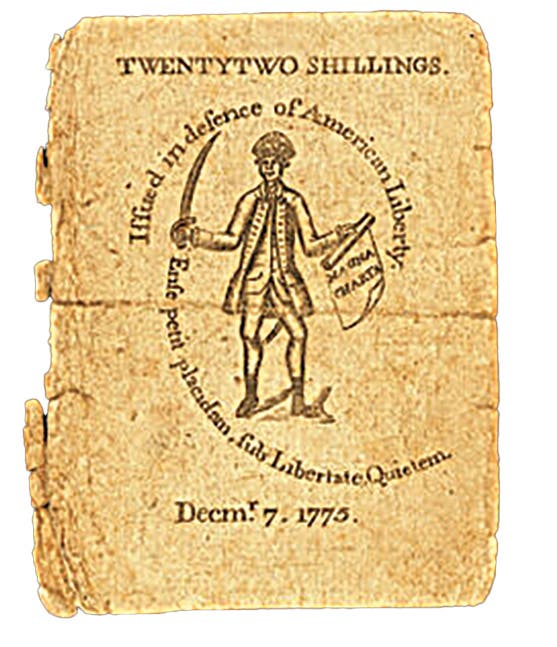Deep South home to historical banks
By Mark Hotz I found myself flipping through my National Currency collection the other week, and I came across a few Georgia notes that reminded me of visits I had…
By Mark Hotz
I found myself flipping through my National Currency collection the other week, and I came across a few Georgia notes that reminded me of visits I had made to their towns more than a decade ago. I thought it would be fun to revisit those towns since I rarely have a chance to do articles on towns in the Deep South. So this month, let’s take a hop over to rural Sparta and Greensboro, Georgia.
Sparta is the seat of Hancock County, a rural subdivision midway between the cities of Macon and Augusta but not accessible by any interstate highway. Hancock County was created in 1793; originally part of Greene and Washington counties, Georgia’s 15th county was named for the first signer of the Declaration of Independence, John Hancock. Founded in 1795 during Georgia’s Greek Revival Period, the city of Sparta was named for the classical Greek city and was incorporated as a town on Dec. 3, 1805.
The very attractive Hancock County Courthouse, a classic-style structure erected in 1882 and now listed on the National Register of Historic Places, was the first building I came across as I entered Sparta, which is located at the junction of State Routes 22, 16, and 15. Almost immediately, though, I began to notice that Sparta was rather poor. While the courthouse itself was majestic and well preserved, the square in front of it was poorly maintained and contained a rather shabby Confederate monument. Even more surprising was that directly across from the courthouse, on the opposite side of the square, stood a very dilapidated but still occupied home. It certainly appeared that Sparta had fallen on hard times.
Once the center of a vibrant agricultural economy, Sparta is now a very sleepy town in a subdivision now more forest than farmland. The population hovers around 1,500. This does not mean, however, that Sparta did not have a significant past. Though now a mere shadow of its former self, Sparta still has considerable relics of Georgia history. Just next to the courthouse is the impressive LaFayette Hotel. This period structure was erected in 1840 on the site of the Eagle Tavern, which once served as a stagecoach stop on the Augusta to Macon line. In 1825, the Eagle Tavern was the scene of a great ball held for the visiting Gilbert du Moitier, Marquis de Lafayette, hero of the American War of Independence. The Eagle Tavern burned in the late 1830s and was replaced by the current structure in 1840. Then known as the Edwards’ House, and renamed the Drummers’ Home in 1897, it was, in 1900, voted the most popular hotel for traveling men (salesmen) in Georgia.
Currency collectors remember Sparta as the home of two national banks. The First National Bank of Sparta was organized at the end of 1903 and received charter #7067. It issued all three types of Series 1902 notes until voluntary liquidation in 1923. It was immediately replaced by the Hancock National Bank of Sparta, charter #12317, which opened concomitantly with the closing of the First National Bank. The Hancock National Bank issued just large and small-size $5 notes before being closed by the receiver in 1932. In general, notes from Sparta are scarce.Just two notes are reported from the First National Bank; ten large and a single small are reported from its successor. I have included photos of large notes issued by both the First National and Hancock National Banks, the latter of which is from my collection. Note that the signatures of the cashier and president are the same on both notes, conclusive proof that the Hancock National Bank was the direct successor of the First National.
The first bank building I spied was a semi-boarded up corner structure that had been the Bank of Sparta. This building was not a national bank but was available for rent if someone is looking for a dilapidated bank structure. Farther down Main Street, I found the First National Bank building, with its gaping arched entrance, now housing Hancock Propane. This attractive structure still had its construction dates “1904-1907” on the top pediment. Apparently, after the closure of the First National Bank in 1923, the Hancock National Bank operated out of this same building. I have included a photo of the bank, set within the center of the block.
From Sparta, I headed north on State Route 15 twenty miles to Greensboro, the seat of Greene County. Greensboro, situated at the junction of US 278 and State Routes 15 and 44, was founded in 1786 and incorporated in 1803. Both Greensboro and Greene County were named in honor of General Nathaniel Greene, a hero of the American War of Independence. Greene County is the birthplace of Mercer University and was originally the first choice for the location of the University of Georgia. Greene County was home to the first paper mill in the state as well as the location of both the oldest jail and the oldest Pentecostal church in the state of Georgia.
Greensboro is a very attractive town, and it had been on my list of places to visit because I have a large-size note from the Copelan National Bank of Greensboro. I found Greensboro very inviting. While the Greene County Courthouse was not quite as magnificent as others I had seen on this trip, it was a very impressive example of Greek Revival architecture. The town currently is home to around 3,500 residents.
Greensboro itself had been the home to two national banks. The Greensboro National Bank, charter #6967, was organized in 1903 and closed by the receiver in 1926. It issued a variety of Series 1902 notes to the tune of $563,000. Just half a dozen notes are recorded, and as this bank closed early, no small-size notes were issued. I have included a photo of a note issued by the bank. Unfortunately, the bank’s original structure has been razed and replaced with a modern building.
Greensboro’s second bank was the one I had been seeking. The Copelan National Bank of Greensboro was chartered at the end of 1906, but a local depression forced its closure in 1924. It was absorbed by the Greensboro National Bank and its circulation assumed by that institution, which itself only lasted another two years. The Copelan National Bank had a similar issue to the Greensboro National, and virtually the same circulation: $562,000. I have included a nice note from this bank; note the signature of E.A. Copelan as president. I was fortunate to locate the Copelan National Bank building and to learn a lot about its founder and namesake.
The Copelan National Bank was named for prominent citizen and first president Edward A. Copelan. He was a very important local businessman and one of the forces behind the Mary-Leila Cotton Mill, one of the largest in the area. He also founded the Bank of Greensboro, which he converted to national bank status under his own name in 1906. He was elected to the Georgia State Senate and served as the president of his bank until his death in 1918. The bank building, erected on the site of a former hotel in 1889, still stands at the corner of Main and Broad Streets. It is a lovely old bank, rich in ornamental architectural detail. It has served as a bank, hardware store, and currently is home to the Towne House restaurant. It is worth noting that after his retirement from Major League Baseball, Mickey Mantle spent his final years in Greensboro.
Readers may address questions or comments about this article or national bank notes in general to Mark Hotz directly by email at markbhotz@aol.com.
This article was originally printed in Bank Note Reporter. >> Subscribe today.
If you like what you've read here, we invite you to visit our online bookstore to learn more about Standard Catalog of World Paper Money, General Issues.








